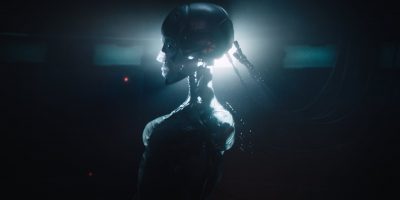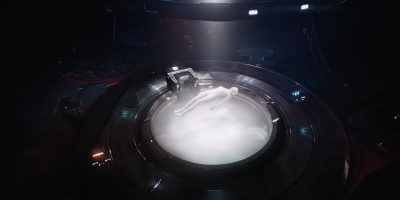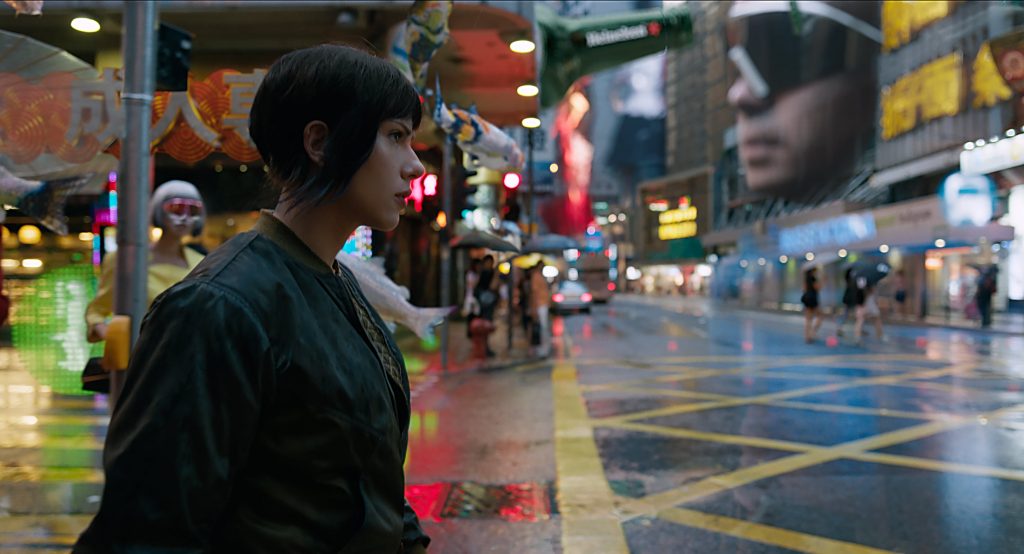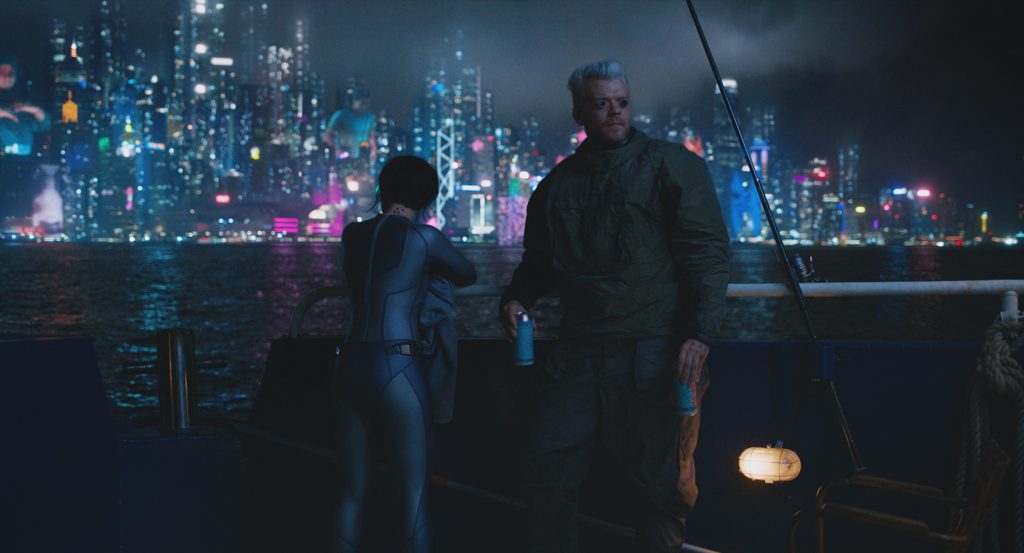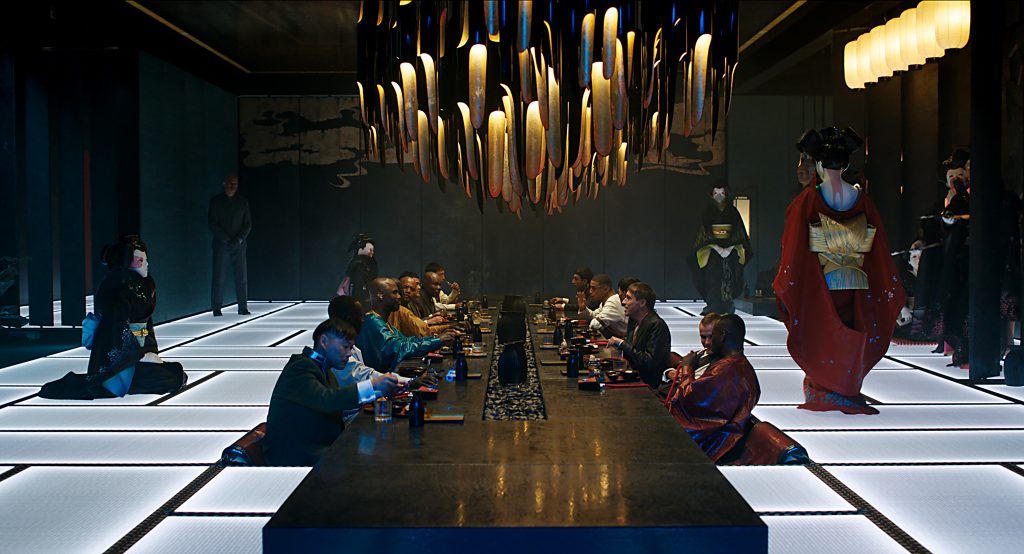Directed by Rupert Sanders, Ghost in the Shell is a spectacular, action-packed visual feast, with some deep AI messages from the future. Certain shots in this gorgeous production gave a clear nod to the stunning visuals of the original Kodansha manga comic series of the same name. The physical state of the lead cyborg ‘Major’, played by Scarlett Johansson, would require MPC and the other studios involved, to be at the top of their game. Mitsuhisa Ishikawa, whose animation studio Production I.G created the original story in animated form, oversaw the creation with close scrutiny on the quality and aesthetics of each shot.
All images: MPC/Paramount Pictures and Dreamworks Pictures and copyright is © 2017 Paramount Pictures. All RightsReserved.
The movie opens with The Shelling Sequence, paying homage to the 1995 anime opening in which we see the creation of a cyborg, revealed later to be Major. This was created using a blend of CG and practical models created at Weta. MPC’s work was to create a digital skeleton, the muscles of a skinned body, as well as the different types of fluid, which enwrap the body during its creation. Once again, there is no place to hide. Everything is full screen, deliciously digital and close-up.
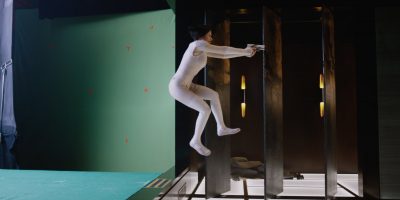
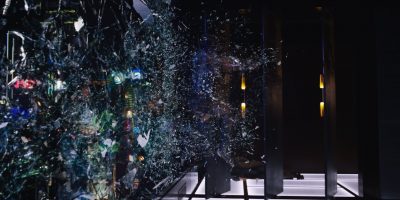
Suited
“The thermoptic suit was meant to be entirely practical,” says Axel Bonami from Montreal. “And [Weta] had really done an amazing job with that. But we knew we would have on top of that some secondary effects, some slight iridescence to give the suit more of an electric look. There was also the effect of going in and out of invisibility. We wanted to keep that suit alive even when she was resting. During filming with Scarlett and the stunt girls the action showed us a few bumps and irregularities, so there was a bit of rotoscope work to clean those.” The CG version of Scarlett Johansson’s suit allowed Sanders to include many later design adjustments.
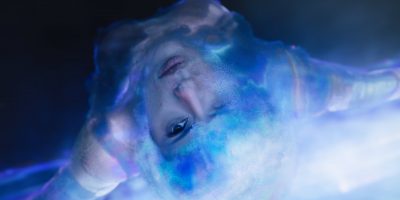
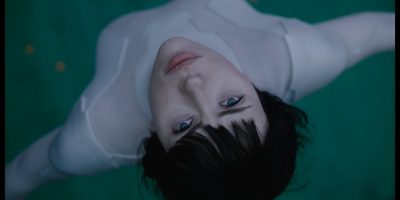
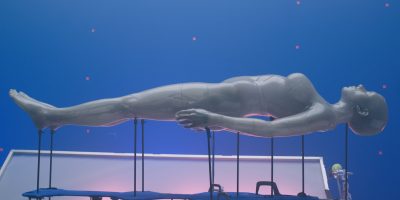
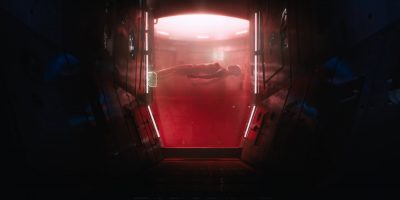
They used the practical suit as a perfect lighting reference and kept its silicon texture true and visible. “This silicon suit was only a few millimetres thick but it was still too thick,” says Bonami, “so it was helpful to have the CG version to assist in truly making it look like her robotic skin. The iridescence and ripple voxels were generated in Houdini and rendered in RenderMan, to give it that ‘alive’ feeling as she moved, became agitated, and came in and out of invisibility.”
Solograms
Giant advertising holograms populating the city stepped away from the original series but these ‘solograms’ added an aspect of future city billboards with all their colour and movement. VFX Supervisors Guillaume Rocheron and John Dykstra were working in preproduction, and they knew from the meetings that giant 3D billboards were suggested.
“They wanted to have them solid, and not layered like a projection,” Bonami explains. “There were hundreds generated over 400 frames each to generate the visuals for the advertisements. RealityCapture was used to sample the models and generate the mesh with the textures baked in. There really was a whole lot of data to play with.”
Some of the Solograms were characterised and fairly simple, low resolution but high density. But there were others that were very hi-tech and Axel’s team were playing with all of the parameters.
When it comes to the VFX of the Solograms, the textures in the photogrammetry, every frame is different. When MPC built these forms, they built a voxel bridge, a bit like a 3D TV, where there is depth in each form. To give each Sologram that extra sense that it was part of the crowded city, they would emit a little brighter as their extremities came closer to a building next to it.
A sense of internal LED pastel lighting coming from within these solograms emitted an extra reality to their place in the CG city surrounding them. “As we had the texture of the model available, we could add additional lighting within the mesh of the character,” he adds. “Some might say it is too much, but the way billboard advertising is going nowadays, perhaps in reality, this is the next step. I reckon if you could do it, they would do it!”
CG City
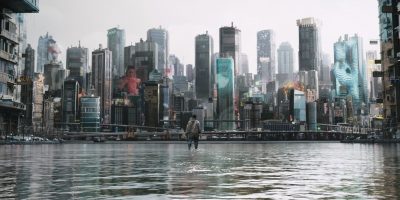
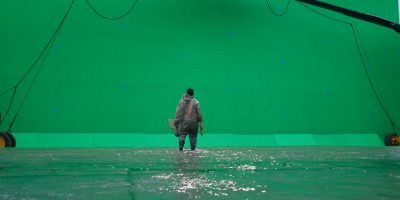
In an introductory shot in Ghost in the Shell, we are flown over various parts of the city the story is resident to. “These aerials were built using many, many stills in Google Earth of Hong Kong, because knew they weren’t going to shoot there,” says Axel Monami. “But we also sent our Environment Supervisor Pier Lefebvre to spend a few nights on the top of buildings in the city of Hong Kong to gather as much high resolution reference as he could for building it in 2.5D back here, but because of the final camera moves, we decided it would be better to build the city areas we required, entirely in CG.”
The assets were built with a lot of monolithic concrete blocks, a brutalism style of architecture, very grey and cold. Not the sort of inviting place you would expect to live in, but more one you could imagine being part of a grey future.
“The MPC team built only some other buildings there which had signs of life and some older buildings that are built from the Hong Kong reference material,” says Monami. “Then we combined all the activity to be found in a crowded city at night, including washing hung, clothes on the line, also newspapers, filth, discarded boxes and rubbish, lots of cars, buses and everything else, all in CG.” Keeping close to the vision from the original anime creation with its deeper manga comic roots, was important to the production as a whole. While still being an interpretation, it reached back to its anime reference very clearly indeed.
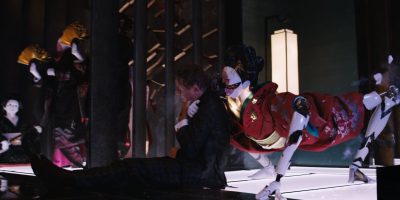
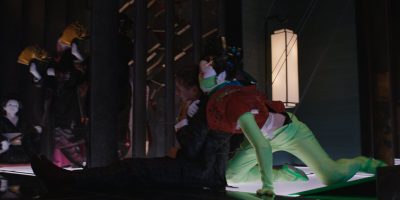
Weta Workshop in New Zealand had a great deal of work in pre-production as well as the live action shoots for Ghost in the Shell, as well of course the majority of set and costume design. The Geisha robot which features quite prominently in the early dinner party shoot-out sequence was created from scratch at Weta Workshop. As was an impressive skeletal robot for the shelling sequence at the beginning of the movie.
During the latter part of production there was an ongoing process of collaboration as the crew from MPC Montreal received the frames from the studio in Wellington. MPC created a CG version of this Geisha so she could have her legs broken and quickly climb the wall with her hostage, but not before adding the odd blink of an eye to the real model. “The combining of subtle CG with reality in these models is most interesting in these sequences,” says Monami. “Even in the ‘shelling’ introduction sequence, nobody knows where or when it is real or not.”
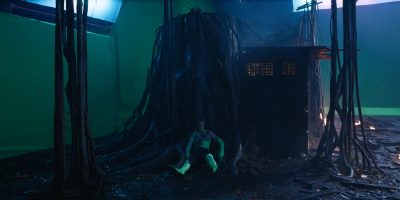
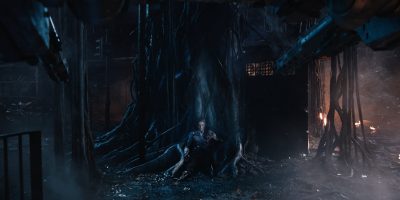
MPC worked globally on Ghost in the Shell, through their London, Montreal and the Bangalore studios, bringing in the talents of over 800 artists in all sectors. Weta was shooting April to June and MPC received the bulk of the material around July through to September 2016 and then delivered in January 2017.
“Deep into the twenty-first century, the line between man and machine has been inexorably blurred as humans rely on the enhancement of mechanical implants and robots are upgraded with human tissue. In this rapidly converging landscape, cyborg super agent Major Motoko Kusanagi is charged to track down the craftiest and most dangerous terrorists and cybercriminals, including “ghost hackers” who are capable of exploiting the human/machine interface and reprogramming humans to become puppets to carry out the hackers’ criminal ends. When Major Kusanagi tracks the cybertrail of one such master hacker, the Puppeteer, her quest leads her into a world beyond information and technology where the very nature of consciousness and the human soul are turned upside down.”
Kodansha Comics
Related links
Ghost in the Shell http://www.paramount.com/movies/ghost-shell
Trailer YouTube https://youtu.be/e4mJ0wNpYN8
Autodesk Maya http://www.autodesk.com.au/products/maya/overview
Pixar RenderMan https://renderman.pixar.com/view/renderman
SideFX Houdini https://www.sidefx.com/
Capture Reality https://www.capturingreality.com
Read more about Ghost in the Shell over at fxguide

